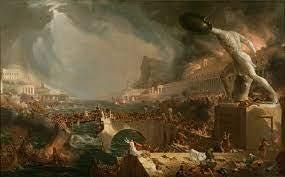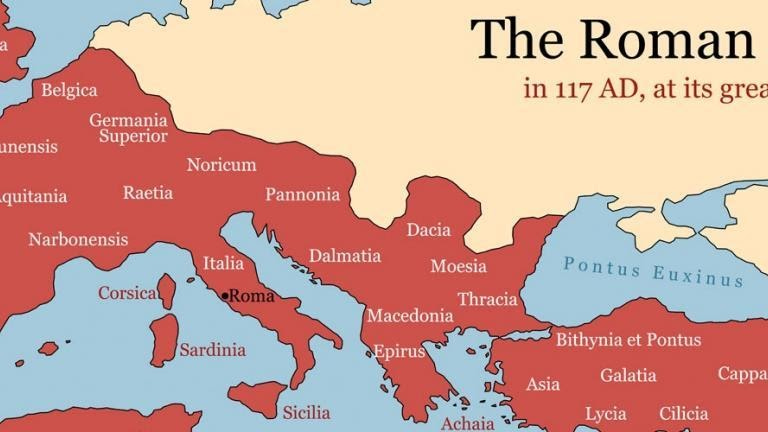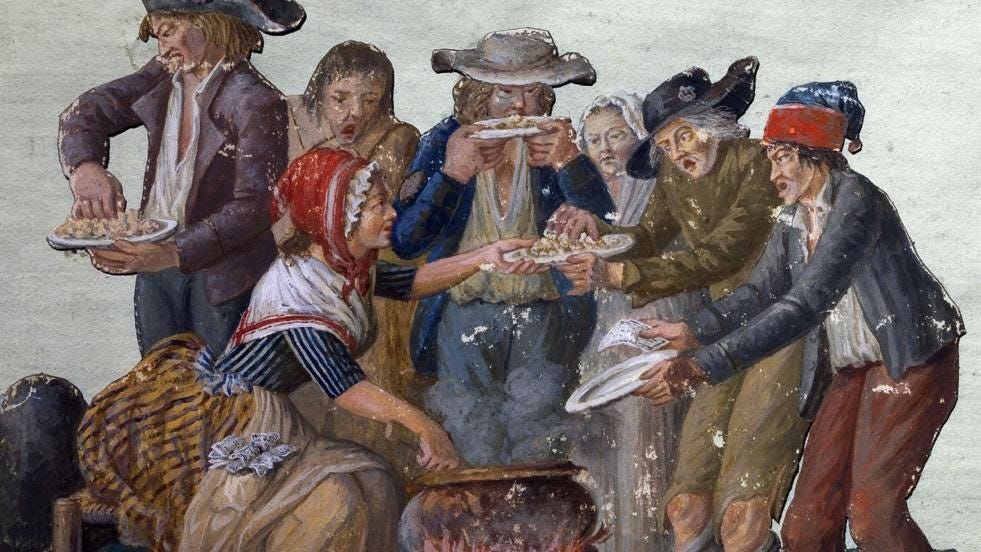Soil Preservation: The History of Societal Struggles

“The Earth is What We All Have in Common”
"For millennia, we have made a living mining soil. It's understandable that most people take soil for granted - it doesn't blossom before your eyes like a plant or a child. In reality, it forms so slowly that a single storm can strip a century of soil formation off a bare, freshly plowed field. Soil problems play out over such long time periods that their effects manifest as slow-motion disasters. But looking back through history, it's clear that societies that abused their soil through erosive farming practices shortchanged their descendants. And today the twin problems of soil erosion and degradation of soil fertility once again threaten civilization's agricultural foundation."
Quote by:David Montgomery
Soil: Creation and Destruction of Human Civilization
Humanity has evolved around some fairly simple elements of survival any ten-year-old boy scout could recite – find shelter, water, and food. In that order!
Access to food started as simple hunting and gathering but as civilizations progressed people began creating tools to channel more agrarian ways of living to support larger civilizations. As people became more advanced at domesticating food, the link between food, soil, and the propulsion of human civilizations became inextricably linked.
Technological advancements changed our relationship with food from migration to domestication (and as of the 1970s, industrialization). Advancements in preservation, irrigation, germination, and fertilization of crops made it less challenging to tend to land for food as opposed to solely hunting. Agriculture meant people no longer needed to worry about finding shelter or water as they hunted for food. In other words, the paradigm shift led to the formation of civilizations and facilitated populations to be able to grow in the form of settlements. The domestication of food enabled human flourishing in an entirely new way.
Growing food in a single place allowed for the formation of large populations around a single landmass. Through sources of life and water, it generated evolving societal roles to adapt to the needs of these new types of civilizations. New non-food production roles formed over time to support the growth of society. People still maintained an intimate relationship with growing and sustaining food production, however, the ability to avoid exerting every hour of everyday hunting food pushed technological advancements forward. The downside, however, meant people needed to adapt to the intricate ways of tending to the land, particularly as populations grew in size. The marks of civilizations of the past show an ever-consistent pattern of misusing the soil as populations grew and in return, the people experienced extreme distress from collapsing food supply, disease, and famine.
Enter Jamestown, the Roman Empire, the French Revolution, and the Environmental Disasters in China in the 1920s.
“God himself dare not appear to a hungry person except in the form of bread”
While shelter and water play vital roles in the survival of man, food, in particular, tells the most fascinating story of the evolution of mankind. Famine has shaped the downfall of many great empires and dynasties in the past. It has also led to several civilizations moving beyond their borders to explore new territories as means to find more resources, particularly food. The Fall of the Roman Empire, the French Revolution, the Environmental hazards in China during the 1920s, and the Jamestown settlements all tell stories of survival or collapse, with all of them telling a story of a broken food system and more specifically the degradation of soil.

Jamestown as a Plantation Colony
The Age of Exploration between the 1400s and 1600s represented not merely a search for new goods from distant trading partners, but also the quest for food and new lands to turn into agricultural production. The quest to the New World largely represented Europe’s mistreatment of its own soil at the time, ultimately leading to the need to find new land to harvest. According to David Montgomery’s book, Dirt: The Erosion of Civilizations, “today's globalized agriculture that ships local produce overseas to wealthier markets reflects the legacy of colonial plantations established to help feed European cities”.
The migration to America makes sense. Resources began to run dry as the populations in Europe flourished. The cultivation of the New World held a potential promise to provide resources back to the countries of Europe.
The founding of the New World in America helps shed some light on the European’s quest for new and fertile land around the world as they sought new ways to gain economic advantages through outsourcing production to colonies. In the case of Jamestown, the colony struggled immensely outside of finding success in the tobacco trade.

Survival in Jamestown depended heavily on establishing basic systems for the colony to flourish in the short term and to demonstrate the potential for substantial value to the monarchs across the ocean in the long term. If they wanted to survive as a colony, the support from royalty abroad meant more resources and people coming from England over time.
The Jamestown colony needed solutions. They faced some major setbacks via food shortages and fires and the road forward seemed remarkably challenging without more resources from mainland England. Luckily, the colonies had something the mainland valued in spades: tobacco.
Tobacco fetched roughly six times the price of any other crop and was able to easily cross the Atlantic after being secured. It dominated the land of the colonies and served as an alternative currency for the people of Jamestown.
Unfortunately, however, growing it led to severe soil degradation and erosion and it forced the colonists further inland. The soil erosion posed serious concerns for the colonist, but luckily land was easily accessible and fertile. The economics supported no incentive to plant any other crops to export to England. King James saw the lucrative business potential of Virginia Company as well. The success of tobacco farming for England in the colonies spurred the growth in agricultural settlements across the world from Europe. As the tobacco trade blossomed, the colonies still faced some serious problems with sustaining life on the lands they consistently destroyed.
Luckily, the farmers in the new world had options. Land in America was not in short supply and tobacco in England was in high demand. The ability to leverage this relationship allowed for the colony to survive through the ability to resettle elsewhere. The settlement faced plenty of struggles, but England continued to send resources to chase the economic benefits born out of the Virginia Company. While Jamestown did not fully collapse, the great fortune it received from using tobacco as a means to survive nearly left them stranded if they were not so lucky to have an excess of fertile land.
The Romans were not as lucky.
The Collapse of Rome
At one point the Roman Empire held a landmass the size of the United States. The artistic and cultural decadence of Rome embodied much of the power of the empire itself. The mighty empire lasted for nearly 1000 years. Over those years, the character, agriculture, and culture of Rome thrived, however as the population grew, it became an immense task to continue to ensure a stable food system.

As David Montgomery describes, "historians still debate the reasons behind the collapse of the Roman Empire, placing different emphases on imperial politics, external pressures, and environmental degradation. But Rome did not so much collapse as it consumed itself. While it would be simplistic to blame the fall of Rome on soil erosion alone, the stress of feeding a growing population from deteriorating lands helped unravel the empire. Moreover, the relation worked both ways. As soil erosion influenced Roman society, political and economic forces in turn shaped how Romans treated their soil".
Rome serves as a premier example of the challenges societies must address in order to maintain and sustain themselves, particularly as they relate to food. Food security is the cornerstone of stability in society.
Enter the French Revolution.
Famine Fueled Revolution
At the advent of the French Revolution, the homeless population in Paris had tripled. The countryside and the city center faced the same problems. The sparks of revolution spread through the people of France over the rising prices of bread and the distrust people felt towards the monarchy. A harsh winter and grain shortages led to a widely held belief called the Pacte de Famine that noble elites had withheld bread from the peasants in the countryside. As bread became scarce, the need for change became radical. Hunger and a collapsing food system spawned the movement and the commitment to see the revolution succeed.

Nearly 40,000 people died during the French Revolution. The distress from famine and inequity in the financial system broke the commoner’s will to support nobility. In the ashes of the destroyed system lay a new Republic. The Revolution in itself had been sparked by catastrophes. Paris was reborn on the other side of the revolution.
The consequences of an unstable food system, through the examples shown so far, have led to imperialism and colonization, societal collapse, and revolution. The last major consequence is illustrated through China’s famines during the 1920s due to immense soil erosion ultimately leading to a mass drought.
Chinese Environmental Crisis
Soil erosion typically reflects several characteristics of the health of the soil itself. Healthy, carbon-rich soil tends to retain water much better than dry soil with low carbon contents. Unfortunately, history tells us societies that choose to neglect the health of the soil ultimately suffer from the negative externalities linked to the short-term benefits of extracting nutrients from the soil for mass food production. China knows this story all too well from the early part of the 20th century, where half a million people died in China during 1920 due to soil erosion. Nearly twenty million people experienced the absolute worst of the overwhelming drought in China, eating anything they could manage to get from the soil. The soil erosion led to famine and mass starvation on a massive scale. The landscape had been stripped clean of any nutrients required to sustain life. Forester and Rhodes scholar Walter Lowdermilk concluded that the soil erosion crisis in China represented an instance where soil degradation crippled a civilization. Empires and dynasties suffer different means of self-destruction; however, the underlying cause tends to link back to the relationship between soil, food, economy, and environment.
What Do Food System Collapses of the Past Tell Us About Today?
Centuries ago, the ability to create and support a thriving food system showed a certain level of technological advancement and prowess. Countries and communities formed around the creation of food. As societies prospered throughout history, the ability to sustain and maintain the growth of food quality and volume posed major challenges in regard to supporting population growth.
The connection between the growth of an empire and the growth of the food system seems pretty obvious on the surface, however, the collapse of these empires shows the challenges of managing the growth of a population and difficulty associated with communicating the concerns as it relates to food, particularly when we have become disassociated with our food system. Unfortunately, we have yet to escape the problem of sustaining the balance between creating enough food, growing enough quality food, and revitalizing our soil in the process.
As the series progresses, we look towards potential roads forward via Regenerative Agriculture, Industrialized Foods, and the impending consequences of both systems on our individual health and our ability to sustain our environment.
Written by: @clemenza